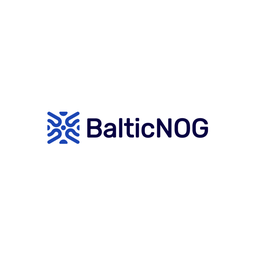The exhaustion of IPv4 address space continues to influence how Regional Internet Registries (RIRs) operate and how network operators plan their strategies. While IPv6 adoption advances, IPv4 remains essential for connectivity, particularly in commercial and large-scale deployments. As scarcity grows, transfer markets have become critical mechanisms to balance supply and demand.
This article looks at how differences in transfer policies, fee structures, and governance approaches across the RIR system shape market outcomes. The goal is not to declare winners or losers but to share observations from available data and to open space for discussion about long-term sustainability.
Diverging transfer trends
Over the past decade, inter-RIR transfers and secondary market activity have revealed consistent differences in outcomes:
- RIPE NCC as a transfer hub: With a flat membership fee, no needs-based requirements for transfers, and acceptance of inter-RIR imports, RIPE NCC has attracted inflows of IPv4 resources. It has become a global liquidity centre, particularly for large operators and hyperscalers that value policy stability and predictable costs.
- ARIN and APNIC as exporters: In contrast, ARIN and APNIC have seen persistent net outflows of address space. Both maintain size-based fee models, and ARIN still applies elements of needs-based justification. These structures create incentives for organisations to offload surplus space or to move resources toward more flexible environments.
- LACNIC’s shifting position: For several years, LACNIC maintained relative stability. However, beginning in 2025, notable outflows have emerged, suggesting that operators are now choosing to move resources abroad when local policies and fees appear less favourable.
- AFRINIC’s isolation: AFRINIC remains largely outside this global market. The absence of an inter-RIR transfer framework, combined with governance challenges, has limited activity. The result is a stagnant address market, leaving AFRINIC disconnected from the global transfer ecosystem.
These diverging outcomes illustrate how policy frameworks translate directly into supply and demand imbalances between regions.
Policy and fee models
One of the strongest drivers of these dynamics lies in how RIRs fund their operations.
- Flat-fee models: RIPE NCC charges a single annual fee regardless of the size of an organisation’s resource holdings. This encourages members to retain or expand their portfolios, since there is no incremental cost to holding more space. The model also provides predictable income for the registry, spreading risk across the entire membership base.
- Size-based models: ARIN and APNIC use fee structures tied to the volume of resources held. As address blocks grow scarcer and market prices rise, larger holders face proportionally higher recurring costs. For some, this creates an incentive to consolidate or transfer resources elsewhere. While size-based models reflect the principle of proportionality, they also concentrate revenue risk in a small set of large members.
- Behavioural impacts: These differences matter. For example, a telecom operator with legacy surplus space may choose to transfer resources to RIPE NCC in order to reduce annual fees while retaining flexibility for leasing or internal use. Conversely, in regions where costs grow with scale, large holders may be more likely to divest.
Fee structures thus do more than fund RIR operations; they actively shape address market behaviour and influence where liquidity accumulates.
Business implications
For operators, the choice of RIR environment is increasingly strategic.
- Hyperscalers: Global content and cloud providers often seek stable, predictable environments. RIPE’s flat-fee model, coupled with open transfer rules, makes it attractive as a long-term base for consolidating address space.
- Telecom operators: As telcos expand into new regions, they evaluate where to anchor their address resources. Those facing steep size-based fees may prefer to register future acquisitions in RIPE, especially when inter-RIR transfer pathways are available.
- Surplus holders: Enterprises with unused legacy space weigh whether to keep resources under fee models that penalise scale or to migrate toward jurisdictions with lower carrying costs. These decisions affect both market supply and registry revenues.
In short, policies and fee models are not abstract rules – they directly influence commercial decision-making at the operator level.
Sustainability considerations
The divergence between "hub" and "exporter" RIRs raises broader questions about institutional sustainability.
- Revenue concentration risk: In size-based systems, revenue may depend heavily on a small number of very large members. If those members transfer resources out, registries face sudden financial strain.
- Community renewal challenges: Many RIR policy processes rely on long-standing volunteer participation. As membership shifts and younger operators engage less, the ability to adapt policies may be limited.
- Operational resilience: If transfer trends continue, some RIRs risk declining membership bases, creating pressure on service delivery and long-term viability. Others, such as RIPE NCC, may see growing operational demand but must manage sustainability of community governance.
These risks are not immediate crises but important areas for discussion as the Internet ecosystem evolves.
Conclusion and community questions
IPv4 transfers highlight how small policy differences can lead to very different outcomes across regions. Flat fees versus size-based structures, open versus restrictive transfer policies – each choice shapes operator incentives, liquidity flows, and ultimately, the health of RIR communities.
As we look forward, several questions emerge for discussion:
- Should RIRs explore greater harmonisation of transfer and fee policies to reduce imbalances?
- How can registries ensure financial stability as membership dynamics change?
- What steps can communities take to attract broader participation and renewal?
This article is part of a bigger study. Read the full text here.



Comments 0